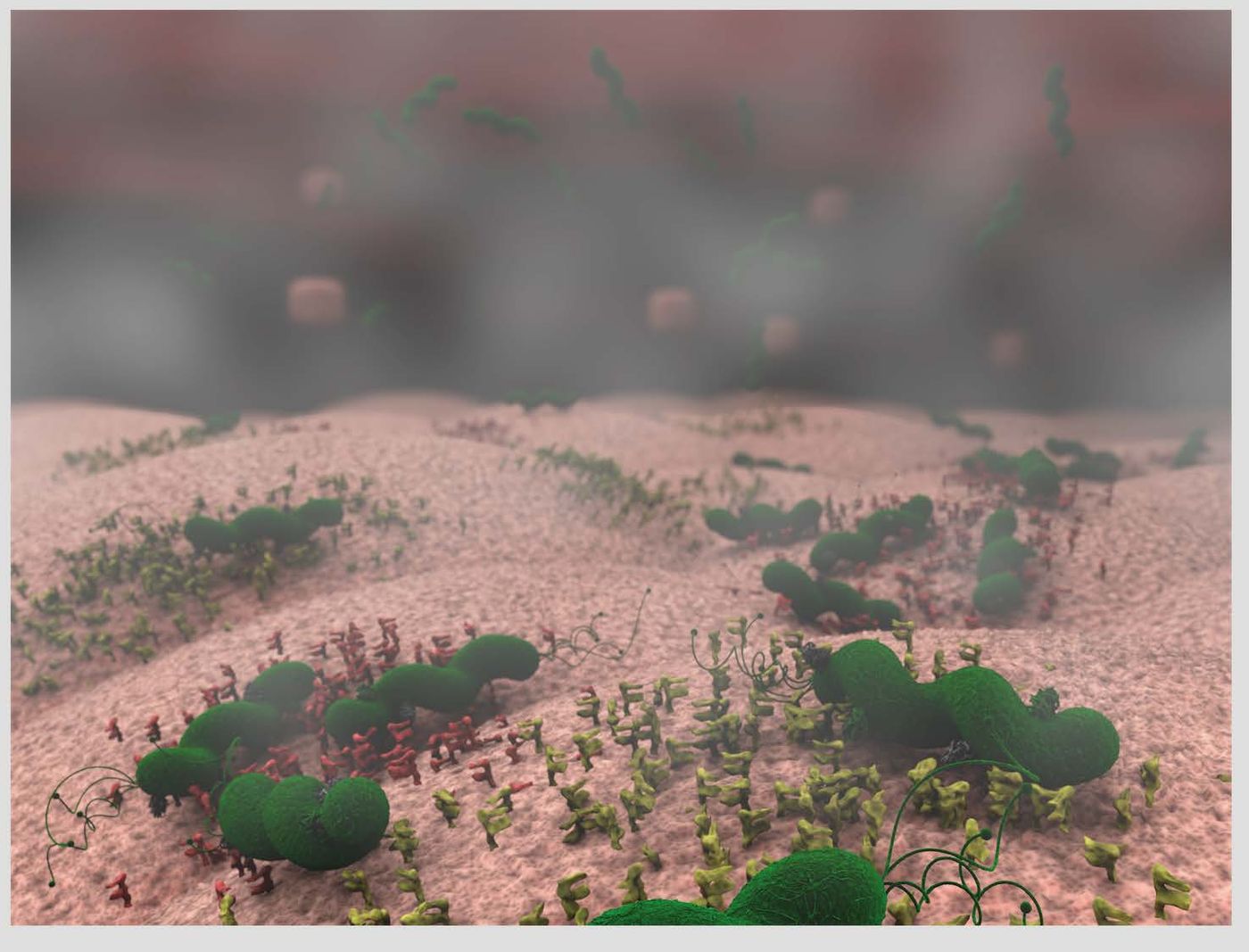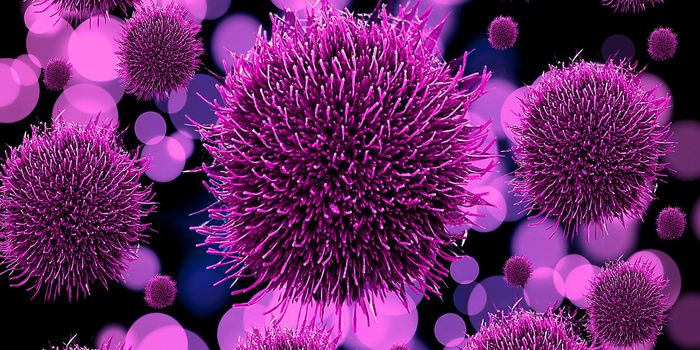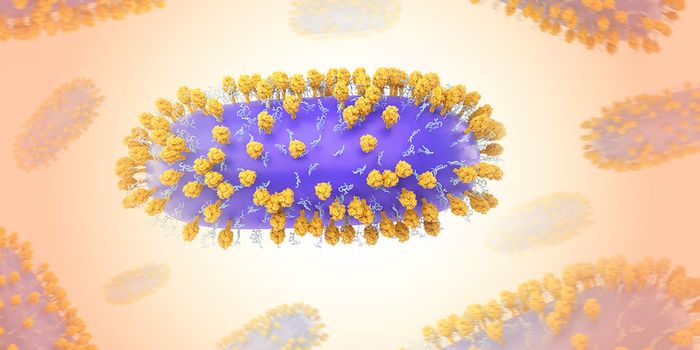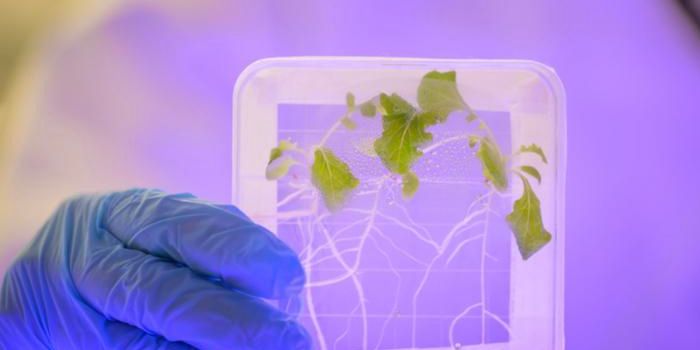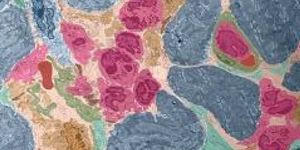H. pylori Uses a pH-Responsive Protein to Adapt to Acidity
Helicobacter pylori is known to be a human pathogen; it can thrive in the acidic environment of the stomach and cause ulcers. New research has revealed that H. pylori utilizes a protein that enables to get a foothold in the lining of the stomach, normally a protective mucosal shield with a neutral pH. That protein, BabA adhesin, is responsive to pH levels, which allows H. pylori to detach from old cells rapidly, before stomach acids can do damage. The bacteria are able to return to the neutral lining, recycling the infection. The scientists, from Umeå University, have published their findings in Cell Host & Microbe; they are animated in the following video.
"We have shown earlier that H. pylori, which is one of the most common infections worldwide and the causative agent for peptic ulcer disease and also cancer, uses adhesin proteins to attach to the stomach," said the lead author of the work, Thomas Borén, a Professor at the Department of Medical Biochemistry and Biophysics at Umeå University in Sweden.
This new work suggests that daily recycling of the infection create an active evolutionary mechanism that acts to select the best fit bacterial cells for a given day and situation, adapting the infection, allowing it to survive and proliferate; it becomes a chronic infection. As BabA evolves to tolerate the high pH levels of the stomach, it may then be enabled to become cancerous.
"We have now found that the H. pylori's BabA attachment protein is equipped with a pH-sensor mechanism. This fascinating mechanism allows the bacterium to detach from the shedding stomach cells and swim back into the protective stomach lining when the bacteria become threatened by increasing acidity of surrounding gastric acid. This ingenious survival mechanism allows the bacterium to thrive in this extreme environment by recycling the stomach infection," said Borén.
The findings were made by an international collaborative effort that included researchers in Sweden at Umeå University, SciLifeLab in Solna, Gothenburg and Örebro universities, as well as scientists in Belgium, Germany, France, UK, Ireland, Greece, Ukraine, India and the United States. The team utilized biochemical techniques, genetic assays and H.pylori strains that have been both created for use in laboratories and samples collected from patients and animals over the course of many years.
Unlike most other bacteria, H. pylori is well-suited to line in the stomach lining, specifically the gastric epithelium and in the thin layer of mucus that shields the wall of the stomach from peptic acid. The investigators have show that the BabA adhesin is responsive to changes in pH or acidity. Low pH levels, like that of gastric acid, disrupts binding activity in BabA. When acidity is neutralized, in other words when H. pylori relocates to the pH neutral lining of the stomach, the binding action is restored. It was also found that the number of pH-sensing sequences in the binding domain of BabA determines the level of pH sensitivity.
"Our findings suggest that BabA enables H. pylori to tightly adhere to the mucosal layer. But the pH-responsiveness also allows the bacterium to escape a certain death by detaching from epithelial- and mucus cells that are shed into the gastric juice," said the first author of the work, Jeanna Bugaytsova, a researcher at Department of Medical Biochemistry and Biophysics.
The research has indicated that inflammation and disease progression drives evolution and adaptation in the sensitivity of BabA adhesins to pH. That evolution is driven in turn by changes in gastric acidity, and the individual host, which manifest through mutation and recombination with genes that are related to BabA. Gastric acidity can change due to long-term medication use, like acid-suppressing drugs, or gastric disease.
"These processes generate diverse H. pylori subpopulations, in which BabA's adaptive evolution contributes to the pathogen's persistence and ability to cause severe gastric disease," explained Thomas Borén.
It is estimated that half of the world population is infected with H. pylori, a bacterium that is able to quickly adapt to new gastric and disease environments. Many of those carriers have symptoms of gastritis; roughly one in five will develop peptic ulcers at some point, which can be a serious and delay health issue. Antibiotics are used to treat gastritis and peptic ulcer disease are treated with antibiotics, some however, have to be treated with multiple courses of different antibiotics. A chronic infection can also develop and in the worst cases can cause gastric cancer, a deadly and very tough to treat type of cancer, which afflicts around 1 million people worldwide every year.
Sources: Medical Express via Umeå University, Cell Host & Microbe
-
MAY 07, 2024Is It Anti-RNP or Anti-Sm/RNP?
- See More
-
APR 30, 2024Immuno-Oncology Virtual Event Series 2024
-
MAY 07, 20243rd International Biosecurity Virtual Symposium
-
JUN 06, 2024The Future of Scientific Conferencing
- See More
